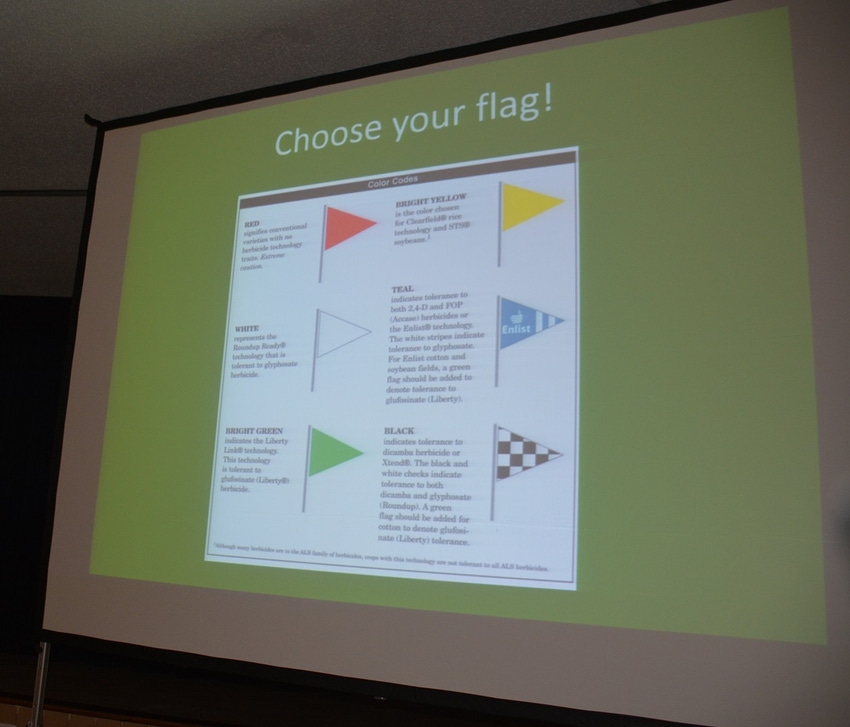
With progress comes opportunity to misuse technology.
Take herbicide resistant crops, for example. They’ve been around for several decades now but mistakes still occur—someone assumes a LibertyLink field is Roundup Ready or that a conventional rice field is Clearfield. The wrong chemical is applied and the lawyers swarm.
The potential for spraying the wrong herbicide on the wrong field will increase significantly when the new 2, 4-D and dicamba products are registered for use, which most industry spokesmen believe will happen in 2016 although EPA has said it is withdrawing the registration for Enlist Duo herbicide in 2016.
Bob Scott, University of Arkansas Extension weed specialist, says low tech offers a simple and relatively inexpensive .
For the latest on southwest agriculture, please check out Southwest Farm Press Daily and receive the latest news right to your inbox.
Scott says a “Flag the Technology” program developed by the University of Arkansas and endorsed by the Arkansas Soybean Promotion Board, the Arkansas Agricultural Industry and the Southern Weed Science Society, “is a quick and inexpensive method to prevent misapplication of pesticides and to warn of technology that is sensitive to potential off-target drift.”
He discussed the program at the 27th Annual Texas Plant Protection Association Conference this week in Bryan, Texas.
“Widespread use of new technology can be confusing,” Scott says. “We need to distinguish the fields where the new traits are used. It’s simple—use colored flags.”
The program has been in use since 2010.
“Several other states have adopted the system,” Scott says. “The only thing we ask when someone else uses this approach is that they maintain the same color code.”
The system uses colored triangular-shaped flags attached to thin poles, about 5 feet high. The flag color indicates what chemistry is used in a certain field. Red flag means conventional crops and herbicide program. Yellow is used for Clearfield crops. White is glyphosate resistance; Teal will be used for Enlist; green for LibertyLink; Black is the Xtend color.
Fields with a combination of glyphosate and another technology may have dual color flags. The Xtend flag, for instance, is black and white checked. Enlist has white stripes to indicate glyphosate.
Scott says the program spent $250,000 on flags in Arkansas from 2011 through 2014. Some 2 million acres were flagged in Arkansas, Mississippi and Missouri in 2013. “We’ve had interest from California, Canada, the East Coast, Texas and Central America,” Scott says.
He’s seen some problems, including cost. “Farmers used them a lot at first, when they were free,” he says.
“We’re running out of colors and sometimes aerial applicators can’t see them.” That’s sometimes because the pilots are color-blind, he explains.
“Moving flags from field to field can be a problem. The quality of the flags is an issue as is misuse of the flag.” He says he’s seen the flags flying from barn roofs, as makeshift windsocks, attached to kids’ bicycles and once as a traffic control flag at a highway construction job.
He says sometimes flags are stolen from fields and suggests placing them a terrace or two away from the field edge to discourage vandals from taking them.
Scott says the flags may not last from one season to the next and that leaving a flag in a field could cause confusion for the next season if the same crop and herbicide program are not used again.
“As even more new technology comes along, we may need to start using two flags in a field to identify new programs,” he says.
“Also, flags can’t replace common sense.”
About the Author(s)
You May Also Like






